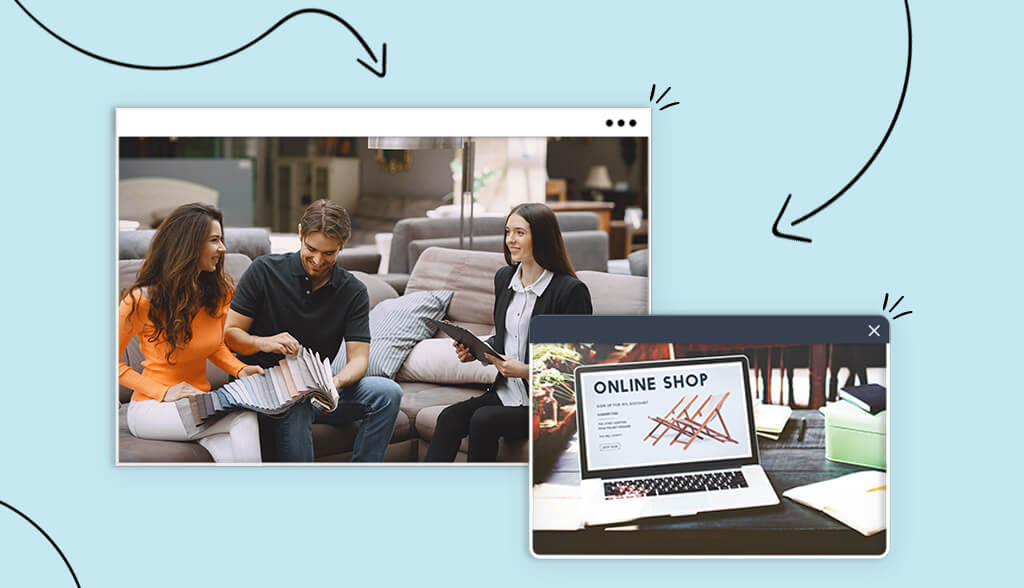
Great writing is not exclusively reserved for celebrated works of prose and poetry (despite what your high school English Lit teacher would have you think).
In fact, I could argue that, even in 2025, we constantly encounter examples of exceptional writing. And, you’d be surprised to find out how effective these texts are at inspiring us to act.
Yes, you guessed it: We’re talking about web copywriting.
Well-written web copy is a powerful branding weapon in your arsenal. It can help you present your business in a positive light, engage your audience, and build relationships with your customers.
And, when done right, web copywriting can inspire your audience to convert (i.e. become customers!), positively impacting your business’s bottom line and giving you a foundation for future profits you can build, through focusing on loyalty.
So, how can you ensure that the language you’re utilizing on your site is actually helping you sell?
The following copywriting tips will inform you regarding what you should (and shouldn’t) do with your website copy and provide a few great examples of web copywriting done right.
The single most important prerequisite of good website copy is audience understanding.
Think about it: No matter how well-written your copy is, it won’t do much if it doesn’t resonate with your potential customers. So, to avoid wasting your time on writing things no one is interested in, the best thing you can do is thoroughly research your audience.
The first step towards accomplishing this task is to develop your buyer personas.
Think about who your potential customers are. Define their age, gender, location (if it’s relevant to your business), interests, pain points, and financial capabilities. Then, you can use this information to create the messages you want to communicate and identify the voice and tone that are most likely to appeal to your audience.
Once you’ve created your audience personas, don’t stop. Even just a little bit of further analysis will help you ensure that your website copy drives results.
For example, you can identify some keywords that are relevant to your potential customers. Go on Google and type in some phrases that are related to your business. So let’s say you have a dog-walking business; you can type “dog-walking”, “pet-grooming” and “ways to train a Dachshund” into Google and see what comes up.
More likely than not, you’ll get a few article suggestions, and you can decide whether these suggestions would be relevant to your audience.
Of course, there is also a more efficient way of conducting keyword research, which is to use dedicated tools. To get the best results, you should try to play around with research tools like the Google Keyword Planner, Semrush Magic Keyword Tool, and MOZ Keyword Explorer.
Alternatively, you could also decide to do a bit of competition research.
By identifying the topics your competitors are covering (and the phrases they’re using in their website copy), you can effectively work to make your copy different.
This approach won’t just distinguish your business. It will also help you reach audiences whose pain points are not being discussed by your competitors, effectively winning you more sales.
While basing your copy on the intended purpose of your product seems like a no-brainer, you’d be surprised to see how many websites fail to do this.
Therefore, to ensure that the language on your site actually sells, you must tell your audience precisely what your product does. Use clear and simple terms–especially if you sell products or services that are technically complex and that people might have a more difficult time understanding.
*Note: If even you can’t explain what you offer in one sentence, your audience is going to have a hard time understanding why it’s relevant for them.
So, what’s the best way to write product descriptions?
Make them concise, focus on readability, and find ways to use visuals or address benefits to convince your target audience they need to purchase. Monitor your page’s readability score (a number that tells you how easy it is for people to read your content) to make sure your descriptions are hitting the mark.
For an excellent example of a brand that does precisely this, check out Scott’s Cheap Flights. Instead of discussing complex algorithms and technology, this brand’s copywriter chose to make the offer approachable to a large audience. The first thing that grabs your eye reads:
“Get alerts for cheap tickets to the world’s best destinations.”
Note how the copy on this landing page achieves a readability score of 80. This number means that anyone with a 7th-grade education (or over the age of 12) will easily understand the text — even if they’re not a native speaker.

For another example of great copywriting, take a look at the AxNote homepage. This brand describes its product in an approachable way, substituting complex technical language for a more straightforward style.
Note how specific features, like “Magic Lens” and “Magic Wand,” are described using easily understandable terms, and even supported with imagery that shows them in action.
Again, this is a copywriting tip you can easily apply to your own website. Not only will there be a higher chance of web visitors actually understanding your offer, but it will also help you with search engine optimization (SEO)--getting more visitors to your site and helping you introduce your product to a large audience.
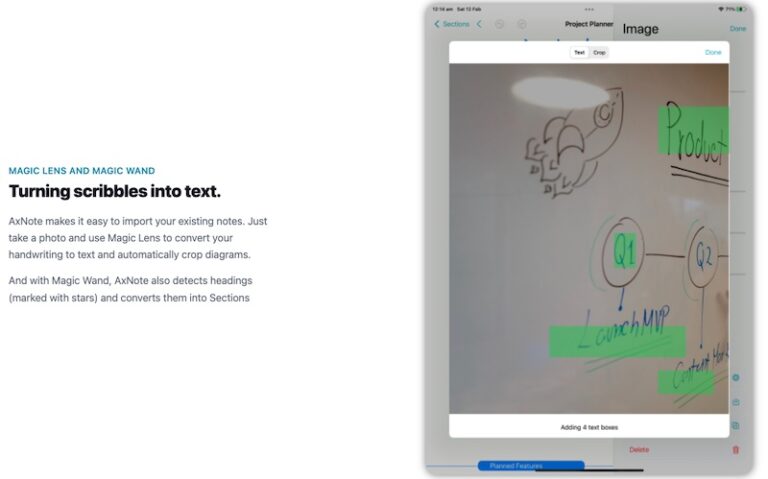
If you’re looking for tricks on writing website copy that inspires sales, it’s definitely worth following this advice: Never put your brand or your offer before your customers.
Unfortunately, it’s easy falling into the trap of focusing too heavily on how amazing your solutions are. And while it’s perfectly understandable (and even desirable) that you’re proud of your products and services, it’s essential to understand that singing your own praises doesn’t convert (again: make sales).
In fact, research shows that most buyers don’t even make purchasing decisions rationally. Yes, they will consider factors like features, price, and convenience. But what they will respond to much better is emotion. More precisely, people are convinced to purchase products based on how those products make them feel.
So, what does this mean for your web copywriting process?
It simply means that you need to optimize how you discuss your offer.
The best tactic is to focus on your customers’ needs and show how your product intends to improve their lives.
To see an exceptional instance of copywriting that converts, check out the Pure Electric homepage. This brand’s unique value proposition advertises an “e-bike that makes cycling easy.”
Why does this language work? It’s simple. It inspires web visitors to act because it addresses the one frustration keeping most people away from cycling — the fact it’s a physically strenuous activity.
And, sure, the hero section (the part of the website that first draws your eye) also addresses benefits like weight, maintenance, and ease of use. But that one sentence, which describes the product’s value to the potential buyer, is, ultimately, what makes Pure Electric’s bikes sell.
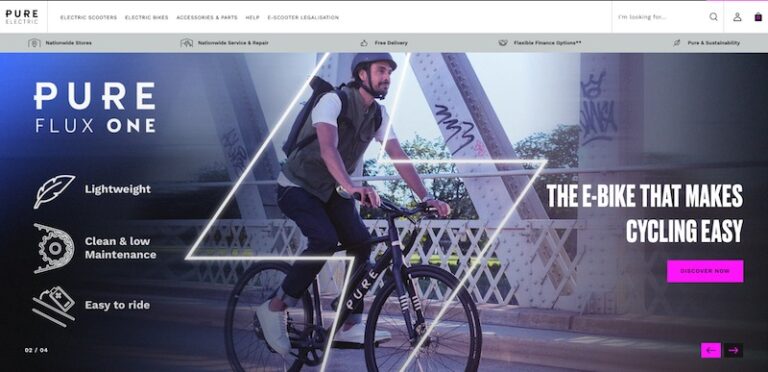
How about a different approach?
When addressing your audience’s pain points, you can also achieve excellent results by talking about technical product features and describing how they benefit your potential customers.
This is what Amerisleep does with the “Amerisleep Bio-Pur® vs. Traditional Memory Foam” section of its landing page. In this section, the brand lists product features (like breathability and support) and describes how they affect the product experience.
So, for example, the open-cell structure of the Bio-Pur® material is described as offering the advantages of preventing heat build-up and being the perfect choice for hot sleepers. Using language in this way tells people who have a difficult time sleeping that this product is the perfect solution for them–leading to a higher chance of these web visitors becoming buyers.
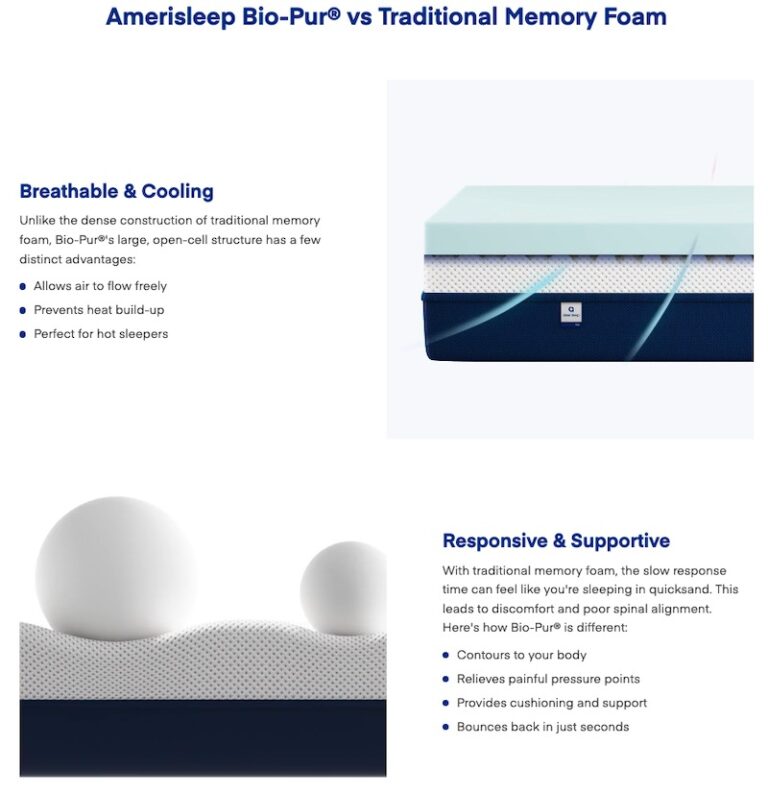
One tactic that can help you turn your website copy from average to next-level is using visuals. That’s not just because the human brain processes visuals at lightning speed. It’s also because scientific research shows that using certain types of visuals aid information comprehension.
Visuals also represent a great way to break up large walls of text, which inevitably boosts readability and increases conversion rates (according to the latest Benchmark Report from Unbounce).
Of course, to reap the benefits of adding imagery to your copy, you have to make the right aesthetic choices. Use the rule of thirds to guide web visitors’ attention on your website.
So, is there an absolute best way to add imagery to your website in a way that supports and segments your copy? Not necessarily. The best way to go forward is to think about what type of visual information will be valuable to your web visitors.
If, for example, you’re writing a blog post about kitchen storage solutions, then using product photos that show those solutions in action makes for an excellent way to drive your point home. This is what Joseph Joseph does on its website, achieving a visually stunning and easy-to-read result.
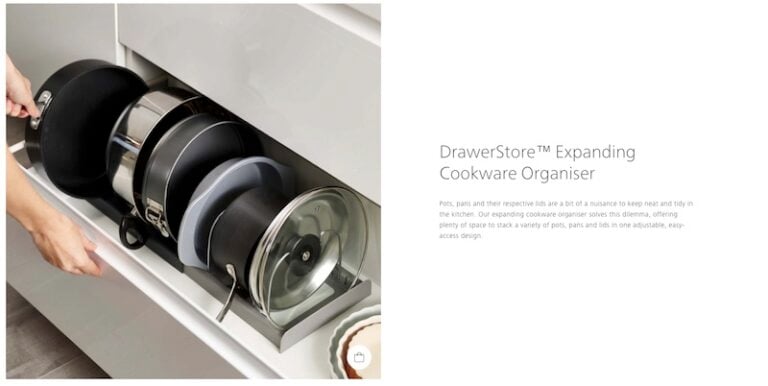
However, if you’re looking for ways to make portions of your web copy pop, you can effectively contextualize concepts (and describe complex features) by opting for a more simple/pared-down approach in the form of icons.
A quick look at the Sola Wood Flowers homepage shows how effectively this brand uses badges and icons to communicate the benefits it offers.

We’ve already covered the importance of directly addressing customer needs when writing web copy. However, if your goal is to boost sales, there’s one more thing you should try to do with the text on your site–and that is to avoid spreading yourself too thin by trying to make more promises than you can (objectively) keep.
In other words, identify your potential customers’ main pain points and double down on them in the copy.
The best (and easiest) way to do this is to identify 1-2 of your audience’s major frustrations. Then, use the most prominent sections of your site to discuss how your products or services solve them.
One of these sections is, naturally, your unique sales proposition. As the USP is traditionally located in the hero section of your website (where web visitors spend 57% of their page-viewing time, according to the NN Group), you can use it to address core pain points and differentiate yourself from your competitors.
This is what Mannequin Mall does on its homepage. Understanding that reliability and trustworthiness represent its main selling points, this brand pretty much spends the majority of its USP discussing:
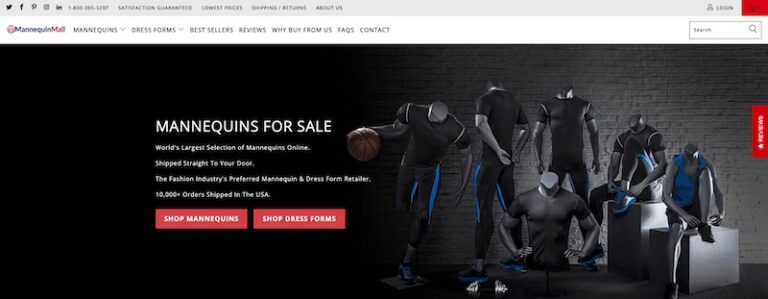
Addressing your audience’s main pain points isn’t something you do exclusively on your homepage.
In fact, being clear about the uniqueness of your offer is even more essential on product or service pages where web visitors will be making their purchasing decisions.
One way to convince them in these sections on your site would be to utilize high-quality product photos, compose witty product descriptions, and include plenty of social proof.
But don’t underestimate the power of well-written benefit-oriented copy, either.
A quick look at the 24 Bottles website will show how effectively this brand communicates its main selling points. And it even does so in no more than 10 words.
So, if you’re looking for inspiration on how to use copywriting to convince your audience to buy, you should definitely consider testing out this minimalistic approach for yourself.
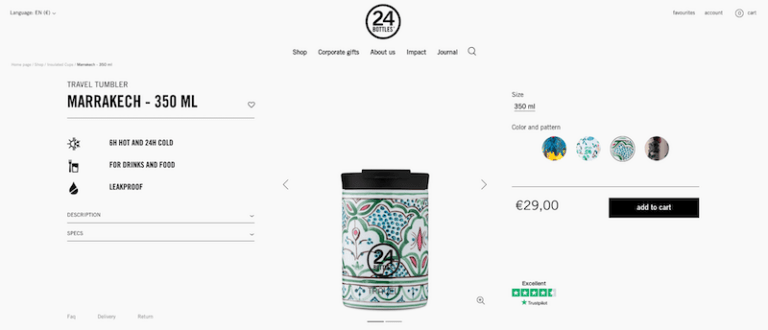
Now that you understand what it is that you should be doing when writing copy for your website, let’s take a quick look at the things you should avoid.
Essentially, no definite formula can determine what’s right or wrong in copywriting. After all, every business has a unique audience–and the way to appeal to these audiences will differ.
(Just think about it: McDonald’s won’t be trying to present its products in the same way a Michelin 3-star restaurant would, simply because it doesn’t cater to the same people).
Nonetheless, there are some copywriting mistakes you should do your best to avoid:
When reading online content, people don’t interact with the text the same way when they do offline. That is, they don’t read but rather skim.
So, to ensure that your copy actually has a chance of driving conversions, make sure that it’s skimmable. Use headings to help web visitors identify key information. Use formatting to help readers focus on important parts of the text. Keep your language easy to read. And, of course, don’t forget to include visual elements in your copy.
While some specific audiences do have a strong understanding of complex subjects and industry-specific language, the better way to inspire conversions is to avoid using (too much) jargon.
This will make your copy accessible, help you reach a larger audience, prevent you from sounding too self-centered, and ensure your audience understands what you offer.
Consumers are pretty good at knowing when they’re being advertised to. And they’re becoming increasingly frustrated with intrusive ads, aggressive sales methods, and unrealistic promises.
So, if you want to help your copy actually inspire conversions, now is the time to rethink the language you use and stay away from worn-out cliches and pushy sales language.
It should go without saying that you should only make promises that you can actually deliver. Do the opposite, and you risk seriously upsetting your audience’s expectations–leading to a poor customer experience, increasing your chances of getting a bad review, and, in the long run, harming your business’s reputation.
Finally, remember that customers don’t want to buy from faceless organizations. They want to support small and local businesses, brands that are human, and companies doing the right thing.
So, to avoid coming off as a faceless company simply trying to sell its products, try to avoid an overly formal tone and inject your copy with some fun, relatable language instead!
There you have it: The best tips to implement if you want to use language to inspire web visitors to convert. Give them a try and see where they lead you.
To make sure you’re making the absolute best copywriting decisions on your website, it’s not a bad idea to keep a close eye on your clicks and sales, and see how changing your copy affects those metrics.
Who knows, a simple change in your USP could help you boost your conversion rates by 5% or even 10%. So start experimenting, and see how writing strong copy will help you grow your business!
This portion of our website is for informational purposes only. Tailor Brands is not a law firm, and none of the information on this website constitutes or is intended to convey legal advice. All statements, opinions, recommendations, and conclusions are solely the expression of the author and provided on an as-is basis. Accordingly, Tailor Brands is not responsible for the information and/or its accuracy or completeness. It also does not indicate any affiliation between Tailor Brands and any other brands, services or logos.
Products
Resources
@2024 Copyright Tailor Brands